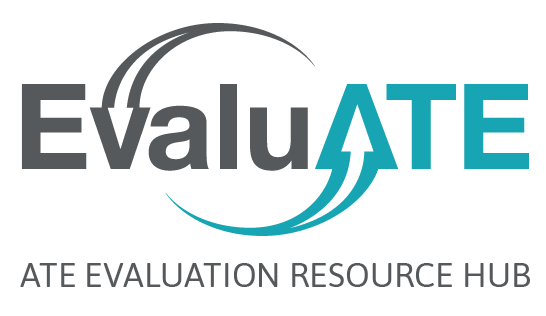
At The Rucks Group, we work with many ATE project teams, and we know that the success of their initiatives frequently depends on the development of strong ties among educators, industry partners, and other stakeholders. In some cases, a team’s primary goal is to ensure the coordination of ideas and resources through the strengthening of connections across various institutions and organizations. As evaluators, we often help our project teams determine if they are achieving the interconnectedness that they want to see.
Social network analysis (SNA) is a unique method that we use with our clients to capture, quantify, and illustrate the connections among individuals and groups in a population of interest.
The method’s key strength¾and what our clients particularly value¾is the ability to generate visualizations of a network. These visualizations provide rich and useful information about the network at a given moment ¾or over multiple points in time as shown in Figure 1.

SNA allows teams to investigate questions such as:
- To what extent are individuals (groups) interconnected? (density in SNA terminology)
- Does something need to be done to increase the number of connections?
- Is the number of connections relatively equal, or are some individuals more connected than others? (centralization in SNA terminology)
- Where do relationships need to be built or strengthened?
- How strong are the various connections?
- Does something need to be done to strengthen interactions?
- Which types of interactions are individuals engaging in?
- Do some types of interactions need to be encouraged more?
- Has any of the above changed over time?
The two most basic elements of SNA are individuals (also called actors and nodes) that are connected via one or more types of relational ties (also called edges, links, or arcs).
- An individual can be a single person or a collection of individuals such as a group, team, organization, institution, or community.
- Relational ties are characterized by their nature. Types of relational ties may include friendships, professional connections, or other partnerships.
In the context of ATE initiatives, most project teams are interested in understanding relational ties based on the purpose of interactions; they want to know who is sharing information, providing guidance, or collaborating. If possible, we also try to capture the strength of these relational ties, typically in terms of frequency or closeness.
The most challenging aspect of SNA is gathering the data needed from individuals in the population of interest. A survey tool must be designed to capture each respondent’s full set of relational ties within the population of interest as well as the types of interactions (e.g., collaboration on a project) that characterize each relational tie.
If you are interested in understanding more about what SNA data collection entails, a white paper that we posted at the 2020 High Impact Technology Exchange Conference (HI-TEC), Using Social Network Analysis to Evaluate the Development of Professional Connectivity, provides more information, including an illustrative example.
SNA is a well-established methodology. The basic elements are easy to understand but designing effective surveys to capture the needed data elements is complex, as are various aspects of the analysis of SNA data. There are many additional resources available on the web, but investigators and evaluators who are new to the topic are advised to seek expert guidance in the methodology before conducting SNA in practice.

Except where noted, all content on this website is licensed under a Creative Commons Attribution-NonCommercial-ShareAlike 4.0 International License.





 EvaluATE is supported by the National Science Foundation under grant number 2332143. Any opinions, findings, and conclusions or recommendations expressed on this site are those of the authors and do not necessarily reflect the views of the National Science Foundation.
EvaluATE is supported by the National Science Foundation under grant number 2332143. Any opinions, findings, and conclusions or recommendations expressed on this site are those of the authors and do not necessarily reflect the views of the National Science Foundation.